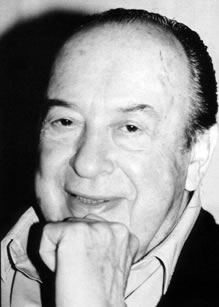 Tim here. This weekend, Disney’s latest attempt at brand leveraging, Maleficent, will be open, and critical word so far is not terribly positive, with only one consistent bright spot being called out in even the most savage reviews. That being Angelina Jolie’s performance as the titular wicked/misunderstood fairy. And this should come as absolutely no surprise to anybody, given that putting Jolie in the role was the only real justification the project ever had. And even moreso given that Maleficent, first introduced in the company’s 1959 animated feature Sleeping Beauty, has long been agreed to be one of the studio’s best villains, and one of the best in movies generally.
Tim here. This weekend, Disney’s latest attempt at brand leveraging, Maleficent, will be open, and critical word so far is not terribly positive, with only one consistent bright spot being called out in even the most savage reviews. That being Angelina Jolie’s performance as the titular wicked/misunderstood fairy. And this should come as absolutely no surprise to anybody, given that putting Jolie in the role was the only real justification the project ever had. And even moreso given that Maleficent, first introduced in the company’s 1959 animated feature Sleeping Beauty, has long been agreed to be one of the studio’s best villains, and one of the best in movies generally.
Some months ago, I said my piece on just why Maleficent was such a top-notch character, and I’ll refrain from belaboring the point again here. Instead, I hope you’ll indulge me if I take this opportunity to spend a moment praising her creator – her original creator, before screenwriter Linda Woolverton (who wrote the awful 2010 Alice in Wonderland) and director Robert Stromberg (the production designer of the awful 2010 Alice in Wonderland) had a chance to make her some kind of half-assed avatar of heavily corporatized feminism. I’m referring to Marc David, one of the famous Nine Old men animators at Disney between the ‘30s and ‘60s, the supervising animator on the original Maleficent.

Davis was Disney’s foremost specialist in women in those days: besides Maleficent, he was also the lead on Cinderella, Alice, and Tinker Bell (among several other characters), and his career as an animator ended with Cruella De Vil. If you’ve ever noticed the unfortunate tendency of Disney films to operate along a kind of sexual dysmorphia, where the human women all look gorgeous, improbably slim, and graceful, while the men are oddly-shaped cartoons… I was about to say, “blame Marc Davis”, but that’s not really fair at all. He was given a job to do, and he did it extremely well. Of all the Disney animators, past present or future, he might have been the very best at capturing the fluidity of the human form, in both peaceful movements (anytime Cinderella glides around) or savage ones (Cruella, or the scene in Cinderella where the stepsisters tear apart the title character’s dress). He was above all things a tremendously skilled draftsman, capturing the shape and lines of a human body in a way that made even a still image feel alive and kinetic.

It was this skill that led to him receiving all the assignments for the most realistic characters, and he did phenomenal work with them. Not for nothing do Maleficent and Cruella frequently land on the top of Disney villain lists; even in the latter’s most extreme moments, they both have an extremely realistic physicality, a sense of being grounded by the rules of humanity, that doesn’t show up in Captain Hook or the Queen of Hearts, to stick just within the same generation. They are, above all things, plausible, Davis’s villains; and that makes them all the more threatening. Just as Alice or Cinderella being so recognizably human makes them all the more relatable and appealing as heroes.

After perfecting his art, Davis took his skills to Disneyland, where his gift for drawing and imagining human behavior made him one of the greatest designers of characters for theme park rides that the company ever knew. It’s the same skill as character design, after all: create a human shape that instantly “reads” to the viewer, and on a ride, there’s much less time to process those shapes, meaning that the figure needs to be instantaneously easy to understand. The Haunted Mansion, Pirates of the Caribbean, and the Country Bear Jamboree are among the rides to immensely benefit from Davis’s gift for character design and putting over personality and inner life through body shape and expression.

There were few animators as technically skilled as Davis, and it’s no accident that we’re still here caring about his most famous creation over a half-century later. It is, by all means, fine art: a few lines that express depths of psychology and physical weight with realer-than-real presence. All the hectic modern filmmaking trickery can’t top that; with Alice and Maleficent having already been run through the live-action meat grinder, I expect that next spring’s Cinderella won’t do any better. Perfection is what it is, and real live actors simply can’t compete.